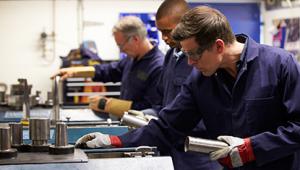Unemployment stood at 1.85 million in the three months to May, 15,000 more than the preceding three months, although the unemployment rate of 5.6% remains unchanged, according to figures released today.
Employment has also dipped for the first time in almost two years, prompting speculation that the labour market recovery is beginning to level out.
Official statistics issued today showed that, over the three months to May, there were 67,000 fewer people in work than in the preceding three-month period. However, compared to the same period in 2014, there were 265,000 more people in work.
Commenting on the figures, the Resolution Foundation said the fall in employment could be a “blip” rather than a new trend.
It noted, however, that weekly earnings growth increased to 2.8% in the year to May, with earnings in the private sector growing by 3.3%. However, public sector earnings grew by just 1.1% and are likely to remain subdued thanks to the chancellor’s summer Budget announcement that public sector pay increases will be limited for the next four years.
“There is a growing public-private split in this recovery, which is set to grow over the course of this Parliament,” said Resolution Foundation chief economist Matthew Whittaker.
“Having experienced a far bigger squeeze in the early part of the downturn, wages in the private sector are recovering relatively quickly, even if they remain some way below their pre-recession peak.
“The earnings outlook for the public sector is far less positive, with employees set to face a parliament of capped pay rises. The danger is that this could create recruitment and retention problems in some sectors, and a greater reliance on temporary and agency staff to plug these gaps.”
In her response to the figures, employment minister Priti Patel highlighted the growth in real wages.
“Today’s figures show real wages growing at the fastest rate since 2007, and near record numbers of women in work,” she said.
“With the government’s new productivity plan, and introduction of the new living wage, we are ensuring everyone benefits from the economic recovery.”




















